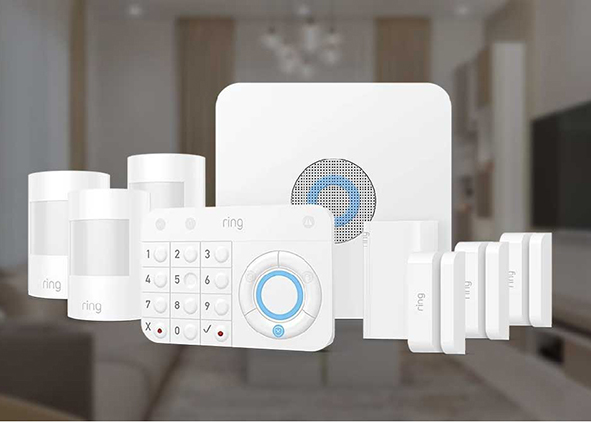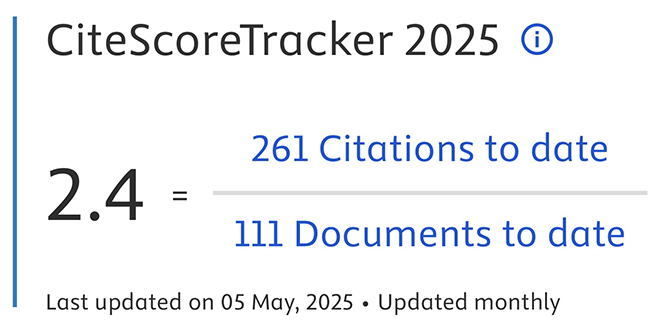When lights turn off. Future perspectives to design smart homes
DOI:
https://doi.org/10.19229/2464-9309/10152021Keywords:
smart home, ambient intelligence, ubiquitous technology, critical design approaches, prosperous futuresAbstract
The Covid-19 pandemic has strongly shown the uncertainty and complexity of our lives. We are involved and we participate in questioning our consolidated life models and in the experimentation of new political and economic models, involving different actors, from the governments to the communities or virtual societies. Technologies have definitely an essential role in these transformations and global challenges aimed to change. This essay analyses the link between this general phenomenon and its particular effect on private citizens, focusing on the digitisation of spaces and, in particular, domestic spaces. Challenges and emerging situations will be highlighted through some case studies concerning smart home systems, different in terms of technology and infrastructure, methods of interaction, hardware and software, and their relationship with the design of this kind of environment. In conclusion, we will present a critical approach to complex systems of the near future, to design in a more conscious and coherent way an intelligent, human-sized and sustainable environment to live in.
Downloads
Article Metrics Graph
References
Aldrich, F. K. (2003), “Smart Homes – Past, Present and Future”, in Harper, R. (ed.), Inside the Smart Home, Springer, London, pp. 17-39. [Online] Available at: doi.org/10.1007/1-85233-854-7_2 [Accessed 21 October 2021].
Bleecker, J. (2010), “Design Fiction – From Props to Prototypes”, in 6th Swiss Design Network Conference 2010 | Negotiating futures design finction, Steudler Press, Basel, pp. 58-67. [Online] Available at: scribd.com/document/396582750/Proceedings-of-Swiss-Design-Network-Conference-2010?language_settings_changed=English [Accessed 21 October 2021].
Chan, M., Estève, D., Escriba, C. and Campo, E. (2008), “A review of smart homes – Present state and future challenges”, in Computer Methods and Programs in Biomedicine, vol. 91, issue 1, pp. 55-81. [Online] Available at: doi.org/10.1016/j.cmpb.2008.02.001 [Accessed 21 October 2021].
Dunne, A. and Raby, F. (2013), Speculative Everything, The MIT Press, Cambridge (MA).
Elsden, C., Chatting, D., Durrant, A. C., Garbett, A., Nissen, B., Vines, J. and Kirk, D. S. (2017), “On Speculative Enactments”, in Mark, G. and Fussell, S. (eds), CHI ’17 – Proceedings of the 2017 CHI Conference on Human Factors in Computing Systems, Association for Computing Machinery, New York, pp. 5386-5399. [Online] Available at: doi.org/10.1145/3025453.3025503 [Accessed 21 October 2021].
Escobar, A. (2018), Design for Pluriverse – Radical Interdependence, Autonomy, and the Making of Worlds, Duke University Press, Durham (US).
Feenberg, A. (2005), “Critical theory of technology – An Overview”, in Tailoring Biotechnologies, vol. 1, issue 1, pp. 47-64. [Online] Available at: sfu.ca/~andrewf/books/critbio.pdf [Accessed 21 October 2021].
Grand, S. and Wiedmer, M. (2010), “Design Fiction – A Method Toolbox for Design Research in a Complex World”, in Durling, D., Bousbaci, R., Chen, L., Gauthier, P., Poldma, T., Roworth-Stokes, S. and Stolterman, E. (eds), Design and Complexity – DRS International Conference 2010, 7-9 July, Montreal, pp. 1-17. [Online] Available at: dl.designresearchsociety.org/drs-conference-papers/drs2010/researchpapers/47 [Accessed 21 October 2021].
Guo, X., Shen, Z., Zhang, Y. and Wu, T. (2019), “Review on the Application of Artificial Intelligence in Smart Homes”, in Smart Cities, vol. 2, issue 3, pp. 402-420. [Online] Available at: doi.org/10.3390/smartcities2030025 [Accessed 21 October 2021].
Hamernik, P., Tanuska, P. and Mudroncik, D. (2012), “Classification of Functions in Smart Home”, in International Journal of Information and Education Technology, vol. 2, issue 2, pp. 149-155. [Online] Available at: doi.org/10.7763/IJIET.2012.V2.98 [Accessed 21 October 2021].
Han, D. and Lim, J. (2010), “Smart home energy management system using IEEE 802.15.4 and zigbee”, in IEEE Transactions on Consumer Electronics, vol. 56, issue 3, pp. 1403-1410. [Online] Available at: doi.org/10.1109/TCE.2010.5606276 [Accessed 21 October 2021].
Heartfield, R., Loukas, G., Budimir, S., Bezemskij, A., Fontaine, J. R. J., Filippoupolitis, A. and Roesch, E. (2018), “A taxonomy of cyber-physical threats and impact in the smart home”, in Computers & Security, vol. 78, pp. 398-428. [Online] Available at: doi.org/10.1016/j.cose.2018.07.011 [Accessed 21 October 2021].
Hoffman, D. L. and Novak, T. P. (2015), Emergent Experience and the Connected Consumer in the Smart Home Assemblage and the Internet of Things. [Online] Available at: dx.doi.org/10.2139/ssrn.2648786 [Accessed 21 October 2021].
Ihde, D. (1997), “The Structure of Technology Knowledge”, in International Journal of Technology and Design Education, vol. 7, pp. 73-79. [Online] Available at: doi.org/10.1023/A:1008809019482 [Accessed 21 October 2021].
Ilstedt, S. and Wangel, J. (2014), “Altering expectations – How design fictions and backcasting can leverage sustainable lifestyles”, in Lim, Y., Niedderer, K., Redström, J., Stolterman, E. and Valtonen, A. (eds), Design’s Big Debates – DRS International Conference 2014, 16-19 June, Umeå, Sweden, pp. 1-13. [Online] Available at: dl.designresearchsociety.org/drs-conference-papers/drs2014/researchpapers/123 [Accessed 21 October 2021].
Intille, S. (2002), “Designing a Home of the Future”, in IEEE Pervasive Computing, vol. 1, issue 2, pp. 76-82. [Online] Available at: doi.org/10.1109/MPRV.2002.1012340 [Accessed 21 October 2021].
Jakobsone, L. (2017), “Critical design as approach to next thinking”, in The Design Journal, vol. 20, issue sup. 1, pp. S4253-S4262. [Online] Available at: doi.org/10.1080/14606925.2017.1352923 [Accessed 21 October 2021].
Koskela, T. and Väänänen-Vainio-Mattila, K. (2004), “Evolution towards smart home environments – Empirical evaluation of three user interfaces”, in Personal and Ubiquitous Computing, vol. 8, pp. 234-240. [Online] Available at: doi.org/10.1007/s00779-004-0283-x [Accessed 21 October 2021].
Kühnel, C., Westermann, T., Hemmert, F., Kratz, S., Müller, A. and Möller, S. (2011), “I’m home – Defining and evaluating a gesture set for smart-home control”, in International Journal of Human-Computer Studies, vol. 69, issue 11, pp. 693-704. [Online] Available at: doi.org/10.1016/j.ijhcs.2011.04.005 [Accessed 21 October 2021].
Marikyan, D., Papagiannidis, S. and Alamanos, E. (2019), “A systematic review of the smart home literature – A user perspective”, in Technological Forecasting and Social Change, vol. 138, pp. 139-154. [Online] Available at: doi.org/10.1016/j.techfore.2018.08.015 [Accessed 21 October 2021].
Morton, T. (2013), Hyperobjects – Philosophy and Ecology after the End of the World, University of Minnesota Press, Minneapolis.
Mussab, A., Zaidan, A. A., Zaidan B. B., Talal, M. and Kiah, M. L. M. (2017), “A Review of Smart Home Applications based on Internet of Things”, in Journal of Network and Computer Applications, vol. 97, pp. 48-65. [Online] Available at: doi.org/10.1016/j.jnca.2017.08.017 [Accessed 21 October 2021].
Nikou, S. (2019), “Factors driving the adoption of smart home technology – An empirical assessment”, in Telematics and Informatics, vol. 45, 101283, pp. 1-12. [Online] Available at: doi.org/10.1016/j.tele.2019.101283 [Accessed 21 October 2021].
Nowotny, H. (2008), Unersättliche Neugier – Innovation in einer fragile Zukunft, Kulturverlag Kadmos, Berlin.
Pierce, J., Sengers, P., Hirsch, T. Jenkins, T., Gaver, W. and DiSalvo, C. (2015), “Expanding and Refining Design and Criticality”, in Begole, B. and Kim, J. (eds), CHI ’15 – Proceedings of the 33rd Annual ACM Conference on Human Factors in Computing Systems, Association for Computing Machinery, New York (US), pp. 2083-2092. [Online] Available at: doi.org/10.1145/2702123.2702438 [Accessed 21 October 2021].
Rasmussen, A. and Zaghloul, M. E. (1998), “In the flow with MEMS”, in IEEE Circuits and Devices Magazine, vol. 14, issue 4, pp. 12-25. [Online] Available at: doi.org/10.1109/101.708474 [Accessed 21 October 2021].
Ricquebourg, V., Menga, D., Durand, D., Marhic, B., Delahoche, L. and Loge, C. (2006), “The Smart Home Concept – Our immediate future”, in 2006 1ST IEEE International Conference on E-Learning in Industrial Electronics, pp. 23-28. [Online] Available at: doi.org/10.1109/ICELIE.2006.347206 [Accessed 21 October 2021].
Saizmaa, T. and Kim, H. (2008), “A Holistic Understanding of HCI Perspectives on Smart Home”, in 2008 Fourth International Conference on Networked Computing and Advanced Information Management, pp. 59-65. [Online] Available at: doi.org/10.1109/NCM.2008.141 [Accessed 21 October 2021].
Schulte, B. F., Marshall, P. and Cox, A. L. (2016), “Homes For Life – A Design Fiction Probe”, in Björk, S., Eriksson, E., Fjeld, M., Bødker, S., Barendregt, W. and Obaid, M. (eds), NordiCHI ’16 – Proceedings of the 9th Nordic Conference on Human-Computer Interaction, Association for Computing Machinery, New York (US), art. 80, pp. 1-10 [Online] Available at: doi.org/10.1145/2971485.2993925 [Accessed 21 October 2021].
Simmel, G. (1950), The Sociology of George Simmel, Free Press, Glencoe (US).
Solaimani, S., Bouwman, H. and Secomandi, F. (2013), “Critical Design Issues for the development of Smart Home technologies”, in Journal of Design Research, vol. 11, n. 1, pp. 72-90. [Online] Available at: doi.org/10.1504/JDR.2013.054067 [Accessed 21 October 2021].
Søndergaard, M. L. J., and Hansen, L. K. (2018), “Intimate futures – Staying with the trouble of digital personal assistants through design fiction”, in Koskinen, I. and Lim, Y-K. (eds), DIS 2018 – Proceedings of the 2018 Designing Interactive Systems Conference, Association for Computing Machinery, New York (US), pp. 869-880. [Online] Available at: doi.org/10.1145/3196709.3196766 [Accessed 21 October 2021].
Weinberger, D. and Durante, M. (2020), Caos quotidiano – Un nuovo mondo di possibilità, Codice Edizioni, Torino.
Zhou, B., Li, W., Chan, K. W., Cao, Y., Kuang, Y., Liu, X. and Wang, W. (2016), “Smart home energy management systems – Concept, configurations, and scheduling strategies”, in Renewable and Sustainable Energy Reviews, vol. 61, pp. 30-40. [Online] Available at: doi.org/10.1016/j.rser.2016.03.047 [Accessed 21 October 2021].

Downloads
Published
How to Cite
Issue
Section
License
This Journal is published under Creative Commons Attribution Licence 4.0 (CC-BY).
License scheme | Legal code
This License allows anyone to:
Share: copy and redistribute the material in any medium or format.
Adapt: remix, transform, and build upon the material for any purpose, even commercially.
Under the following terms
Attribution: Users must give appropriate credit, provide a link to the license, and indicate if changes were made; users may do so in any reasonable manner, but not in any way that suggests the licensor endorses them or their use.
No additional restrictions: Users may not apply legal terms or technological measures that legally restrict others from doing anything the license permits.
Notices
Users do not have to comply with the license for elements of the material in the public domain or where your use is permitted by an applicable exception or limitation.
No warranties are given. The license may not give users all of the permissions necessary for their intended use. For example, other rights such as publicity, privacy, or moral rights may limit how you use the material.


















































































